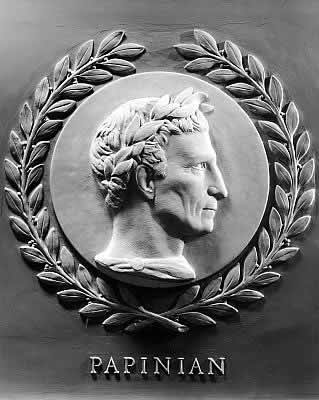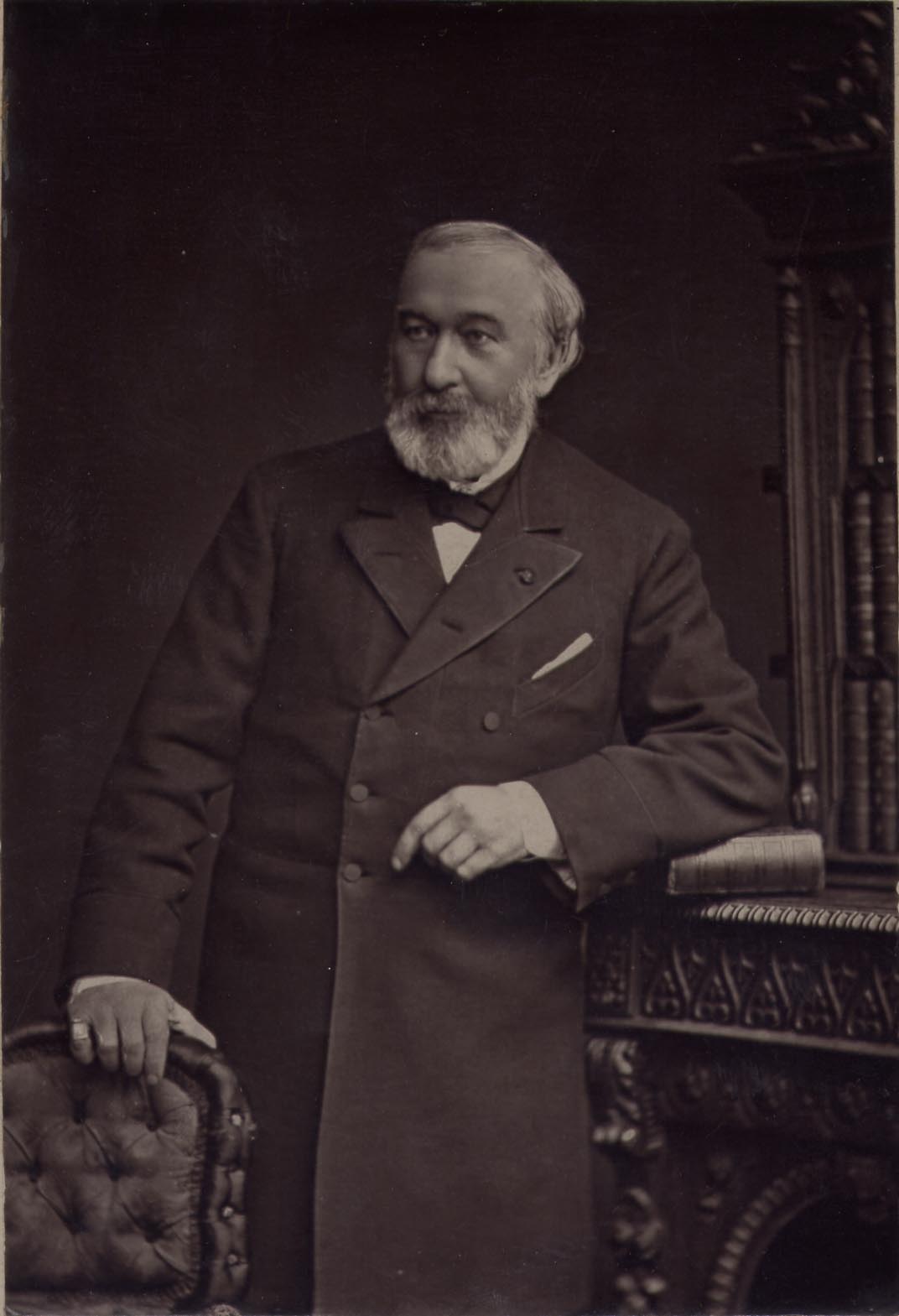|
Ulpian
Ulpian (; la, Gnaeus Domitius Annius Ulpianus; c. 170223? 228?) was a Roman jurist born in Tyre. He was considered one of the great legal authorities of his time and was one of the five jurists upon whom decisions were to be based according to the Law of Citations of Valentinian III. Biography The exact time and place of his birth are unknown, but the period of his literary activity was between AD 211 and 222. He made his first appearance in public life as assessor in the auditorium of Papinian and member of the council of Septimius Severus; under Caracalla he was master of the requests (''magister libellorum''). Elagabalus (also known as Heliogabalus) banished him from Rome, but on the accession of Severus Alexander (222) he was reinstated, and finally became the emperor's chief adviser and '' Praefectus Praetorio''. During the Severan dynasty, the position of Praetorian prefect in Italy came increasingly to resemble a general administrative post, and there was a tendenc ... [...More Info...] [...Related Items...] OR: [Wikipedia] [Google] [Baidu] |
Ulpian's Life Table
Ulpian's life table is an ancient Roman annuities table. It is known through a passage, originating from the jurist Aemilius Macer, preserved in edited form in Justinian's '' Digest''. The table appears to provide a rough outline of ancient Roman life expectancy. Although it is not clear what population the table refers to, or how its data was gathered, Richard Duncan-Jones has suggested that it refers to slaves and ex-slaves, who were often the object of testamentary maintenance grants. Aemilius Macer probably lived in the 230s AD. He records the table in his systematic commentary on the '' lex Julia de vicesima hereditatium'', an Augustan law of 6 AD that put a 5 percent tax on inheritances. Despite its many numbers, the fragment does not appear to be afflicted by any serious textual corruption. Table Macer's text provides two figures: a ''forma'', or schedule, presented by Ulpian (d. 223), and a customary (''solitum est'') schedule that antedates Ulpian's. The ''forma'' is ... [...More Info...] [...Related Items...] OR: [Wikipedia] [Google] [Baidu] |
Deipnosophistae
The ''Deipnosophistae'' is an early 3rd-century AD Greek work ( grc, Δειπνοσοφισταί, ''Deipnosophistaí'', lit. "The Dinner Sophists/Philosophers/Experts") by the Greek author Athenaeus of Naucratis. It is a long work of literary, historical, and antiquarian references set in Rome at a series of banquets held by the protagonist for an assembly of grammarians, lexicographers, jurists, musicians, and hangers-on. Title The Greek title ''Deipnosophistaí'' () derives from the combination of ' (, "dinner") and ''sophistḗs'' (, "expert, one knowledgeable in the arts of ~"). It and its English derivative ''s'' thus describe people who are skilled at dining, particularly the refined conversation expected to accompany Greek symposia. However, the term is shaded by the harsh treatment accorded to professional teachers in Plato's Socratic dialogues, which made the English term ' into a pejorative. In English, Athenaeus's work usually known by its Latin form ' ... [...More Info...] [...Related Items...] OR: [Wikipedia] [Google] [Baidu] |
Athenaeus
Athenaeus of Naucratis (; grc, Ἀθήναιος ὁ Nαυκρατίτης or Nαυκράτιος, ''Athēnaios Naukratitēs'' or ''Naukratios''; la, Athenaeus Naucratita) was a Greek rhetorician and grammarian, flourishing about the end of the 2nd and beginning of the 3rd century AD. The '' Suda'' says only that he lived in the times of Marcus Aurelius, but the contempt with which he speaks of Commodus, who died in 192, shows that he survived that emperor. He was a contemporary of Adrantus. Several of his publications are lost, but the fifteen-volume '' Deipnosophistae'' mostly survives. Publications Athenaeus himself states that he was the author of a treatise on the ''thratta'', a kind of fish mentioned by Archippus and other comic poets, and of a history of the Syrian kings. Both works are lost. The ''Deipnosophistae'' The '' Deipnosophistae'', which means "dinner-table philosophers", survives in fifteen books. The first two books, and parts of the third, eleventh a ... [...More Info...] [...Related Items...] OR: [Wikipedia] [Google] [Baidu] |
Tyre, Lebanon
Tyre (; ar, صور, translit=Ṣūr; phn, 𐤑𐤓, translit=Ṣūr, Greek ''Tyros'', Τύρος) is a city in Lebanon, one of the oldest continually inhabited cities in the world, though in medieval times for some centuries by just a tiny population. It was one of the earliest Phoenician metropolises and the legendary birthplace of Europa, her brothers Cadmus and Phoenix, as well as Carthage's founder Dido (Elissa). The city has many ancient sites, including the Tyre Hippodrome, and was added as a whole to UNESCO's list of World Heritage Sites in 1984. The historian Ernest Renan noted that "One can call Tyre a city of ruins, built out of ruins". Today Tyre is the fourth largest city in Lebanon after Beirut, Tripoli, and Sidon. It is the capital of the Tyre District in the South Governorate. There were approximately 200,000 inhabitants in the Tyre urban area in 2016, including many refugees, as the city hosts three of the twelve Palestinian refugee camps in Lebanon: Burj ... [...More Info...] [...Related Items...] OR: [Wikipedia] [Google] [Baidu] |
Digest (Roman Law)
The ''Digest'', also known as the Pandects ( la, Digesta seu Pandectae, adapted from grc, πανδέκτης , "all-containing"), is a name given to a compendium or digest of juristic writings on Roman law compiled by order of the Byzantine emperor Justinian I in 530–533 AD. It is divided into 50 books. The ''Digest'' was part of a reduction and codification of all Roman laws up to that time, which later came to be known as the (). The other two parts were a collection of statutes, the (Code), which survives in a second edition, and an introductory textbook, the Institutes; all three parts were given force of law. The set was intended to be complete, but Justinian passed further legislation, which was later collected separately as the (New Laws or, conventionally, the "Novels"). History The original ''Codex Justinianus'' was promulgated in April of 529 by the C. "Summa". This made it the only source of imperial law, and repealed all earlier codifications. However, it ... [...More Info...] [...Related Items...] OR: [Wikipedia] [Google] [Baidu] |
Severus Alexander
Marcus Aurelius Severus Alexander (1 October 208 – 21/22 March 235) was a Roman emperor, who reigned from 222 until 235. He was the last emperor from the Severan dynasty. He succeeded his slain cousin Elagabalus in 222. Alexander himself was eventually assassinated, and his death marked the beginning of the events of the Crisis of the Third Century, which included nearly fifty years of civil war, foreign invasion, and the collapse of the monetary economy. Alexander was the heir to his cousin, the 18-year-old Emperor Elagabalus. The latter had been murdered along with his mother Julia Soaemias by his own guards, who, as a mark of contempt, had their remains cast into the Tiber river. Alexander and his cousin were both grandsons of Julia Maesa, the sister of empress Julia Domna, who had arranged for Elagabalus's acclamation as emperor by the Third Gallic Legion. Alexander's 13-year reign was the longest reign of a sole emperor since Antoninus Pius. He was also the second-young ... [...More Info...] [...Related Items...] OR: [Wikipedia] [Google] [Baidu] |
Praetorian Prefect
The praetorian prefect ( la, praefectus praetorio, el, ) was a high office in the Roman Empire. Originating as the commander of the Praetorian Guard, the office gradually acquired extensive legal and administrative functions, with its holders becoming the Emperor's chief aides. Under Constantine I, the office was much reduced in power and transformed into a purely civilian administrative post, while under his successors, territorially-defined praetorian prefectures emerged as the highest-level administrative division of the Empire. The prefects again functioned as the chief ministers of the state, with many laws addressed to them by name. In this role, praetorian prefects continued to be appointed by the Eastern Roman Empire (and the Ostrogothic Kingdom) until the reign of Heraclius in the 7th century AD, when wide-ranging reforms reduced their power and converted them to mere overseers of provincial administration. The last traces of the prefecture disappeared in the Byzantine ... [...More Info...] [...Related Items...] OR: [Wikipedia] [Google] [Baidu] |
Tyre (Lebanon)
Tyre (; ar, صور, translit=Ṣūr; phn, 𐤑𐤓, translit=Ṣūr, Greek ''Tyros'', Τύρος) is a city in Lebanon, one of the oldest continually inhabited cities in the world, though in medieval times for some centuries by just a tiny population. It was one of the earliest Phoenician metropolises and the legendary birthplace of Europa, her brothers Cadmus and Phoenix, as well as Carthage's founder Dido (Elissa). The city has many ancient sites, including the Tyre Hippodrome, and was added as a whole to UNESCO's list of World Heritage Sites in 1984. The historian Ernest Renan noted that "One can call Tyre a city of ruins, built out of ruins". Today Tyre is the fourth largest city in Lebanon after Beirut, Tripoli, and Sidon. It is the capital of the Tyre District in the South Governorate. There were approximately 200,000 inhabitants in the Tyre urban area in 2016, including many refugees, as the city hosts three of the twelve Palestinian refugee camps in Lebanon: Bu ... [...More Info...] [...Related Items...] OR: [Wikipedia] [Google] [Baidu] |
Alexander Severus
Marcus Aurelius Severus Alexander (1 October 208 – 21/22 March 235) was a Roman emperor, who reigned from 222 until 235. He was the last emperor from the Severan dynasty. He succeeded his slain cousin Elagabalus in 222. Alexander himself was eventually assassinated, and his death marked the beginning of the events of the Crisis of the Third Century, which included nearly fifty years of civil war, foreign invasion, and the collapse of the monetary economy. Alexander was the heir to his cousin, the 18-year-old Emperor Elagabalus. The latter had been murdered along with his mother Julia Soaemias by his own guards, who, as a mark of contempt, had their remains cast into the Tiber river. Alexander and his cousin were both grandsons of Julia Maesa, the sister of empress Julia Domna, who had arranged for Elagabalus's acclamation as emperor by the Third Gallic Legion. Alexander's 13-year reign was the longest reign of a sole emperor since Antoninus Pius. He was also the second-young ... [...More Info...] [...Related Items...] OR: [Wikipedia] [Google] [Baidu] |
Papinian
Aemilius Papinianus (; grc, Αἰμίλιος Παπινιανός; 142 CE–212 CE), simply rendered as Papinian () in English, was a celebrated Roman jurist, ''magister libellorum'', attorney general (''advocatus fisci'') and, after the death of Gaius Fulvius Plautianus in 205 CE, praetorian prefect. Papinian was one of the most revered jurists in ancient Rome, as third year law students were given the title "''Papinianistae''" (meaning "they that are worthy to study Papinian"). In his time, he had been called "the Asylum of Right and Treasurer of the Laws". Along with Gaius, Paulus, Modestinus and Ulpian, he was made one of the five jurists whose recorded views were considered decisive by the Law of Citations of 426 CE; their views would later be considered the only suitable ones to be cited as primary sources for the '' Codex Theodosianus'' and the ''Corpus Juris Civilis'', provided that Papinian's views prevailed whenever those of the four other jurists were not congr ... [...More Info...] [...Related Items...] OR: [Wikipedia] [Google] [Baidu] |
Praetorian Guard
The Praetorian Guard (Latin: ''cohortēs praetōriae'') was a unit of the Imperial Roman army that served as personal bodyguards and intelligence agents for the Roman emperors. During the Roman Republic, the Praetorian Guard were an escort for high-rank political officials ( senators and procurators) and were bodyguards for the senior officers of the Roman legions. In 27 BC, after Rome's transition from republic to empire, the first emperor of Rome, Augustus, designated the Praetorians as his personal security escort. For three centuries, the guards of the Roman emperor were also known for their palace intrigues, by which influence upon imperial politics the Praetorians could overthrow an emperor and then proclaim his successor as the new ''caesar'' of Rome. In AD 312, Constantine the Great disbanded the and destroyed their barracks at the Castra Praetoria. In the Roman Republic In the period of the Roman Republic (509–27 BC) the Praetorian Guard originated as bodyguard ... [...More Info...] [...Related Items...] OR: [Wikipedia] [Google] [Baidu] |
Palais De Justice (Brussels)
The Palace of Justice of Brussels (french: Palais de Justice de Bruxelles, ; Dutch: ) or Law Courts of Brussels, nl, Rechtbank van Brussel is a courthouse in Brussels, Belgium. It is the country's most important court building, seat of the judicial ''arrondissement'' of Brussels, as well as of several courts and tribunals, including the Court of Cassation (Belgian supreme court), the Court of Assizes (highest criminal court), the Court of Appeal of Brussels (appellate court), the Tribunal of First Instance of Brussels (general jurisdiction), and the Bar Association of Brussels. Designed by the architect Joseph Poelaert, in an eclectic style of Greco-Roman inspiration, to replace an older courthouse, the current building was erected between 1866 and 1883. With a ground surface of , the edifice is reputed to be the largest constructed in the 19th century and remains one of the largest of its kind. The total cost of the construction, land, and furnishings was somewhere i ... [...More Info...] [...Related Items...] OR: [Wikipedia] [Google] [Baidu] |








